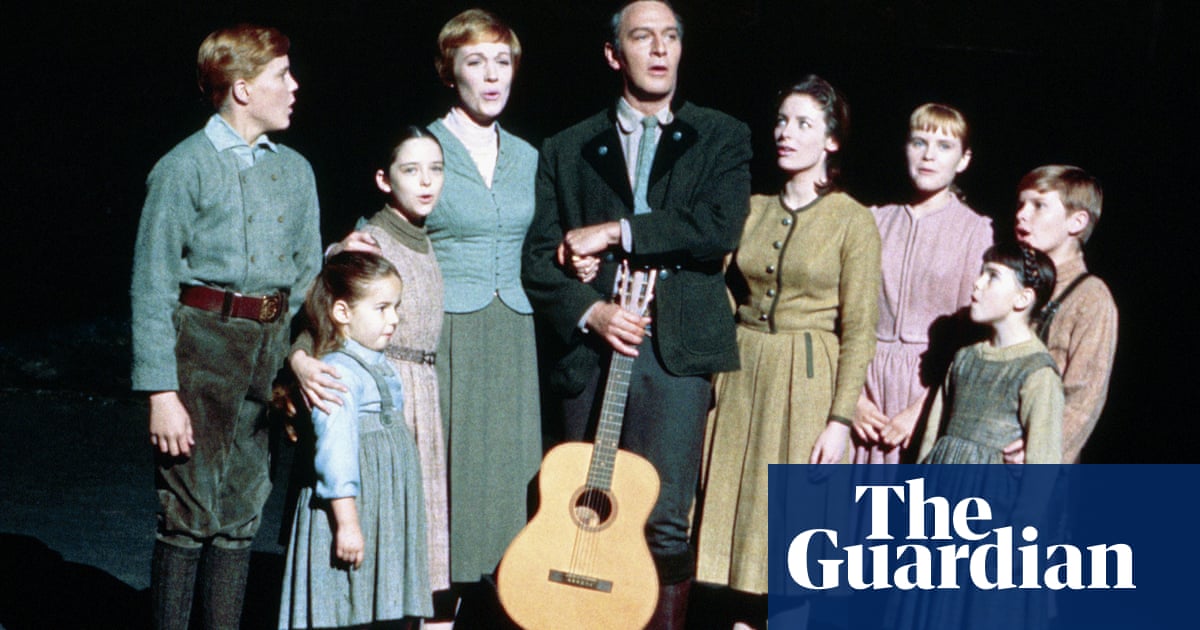
ideo art emerged in tandem with experimental film during the 1960s, as lively, open-ended alternatives away from the centre. Practitioners with contrarian agendas and backgrounds in disparate fields – music, performance, literature, visual art and the moving image – took to experimenting with audiovisual configurations. Feeling unconstrained, they explored consumer tools alone in their studios, or in the supportive environment of artist-run, nonprofit spaces.
During this early phase, contemporary art museums concentrated on concrete, commodifiable forms, namely painting and sculpture. Many considered the moving image anathema, horrified by how sound would invade adjacent sacrosanct white-cube spaces. Yet by the late 1990s, museums were finally contemplating video and media as exhibitable art forms.
The moving-image artworks featured here demonstrate how video and film evolved and became contemporary art. Artists have continued to thrive, inspired by media’s open-endedness. Rather than be pigeonholed by labels, most practitioners favour the simple term: artist. This suits their approach to creating an artwork that might materialise as an installation, a performance, a virtual reality environment or a downloadable file. More than ever, media art belongs to the here and now, as it evolves with technology, the times, and its users.
The future of media art appears bright. Post-Covid-19, such public spaces as Piccadilly Circus are commissioning site-specific projections by artists as significant as Ai Weiwei. Museums such as Tate Modern are welcoming back viewers to experience trailblazing artists, such as Bruce Nauman’s formidable survey now on view.
During lockdown, artists have remained active, using social media for the distribution of their work. New forms of expression will soon be unveiled. Pay attention! Groundbreaking ideas will appear out of the blue, with little fanfare. Barbara London
Reel genius: 30 revolutionary works of video art
Entries by Skye Sherwin & Oliver Basciano
Andy Warhol | Blow Job, 1964
Warhol did not invent video art: various formal experiments in manipulating film and video forerun his interest. As early as 1958, the German artist Wolf Vostell had incorporated a TV set into one of his avant garde Fluxus happenings, and by the following year Vostell had developed video installation as we know it today. However, Warhol took the idea and made it famous. If nothing else the artist was adept at identifying new fashions and, with his flair for self-promotion, bringing them to mass attention. Here, a handsome man throws his head back in ecstasy, yet Warhol’s 36-minute film is not prurient, or at least not entirely so. As the work progresses, the camera never leaves the lucky guy’s face as a gamut of emotions play out: from boredom to pain, sadness and back to pleasure.
Bruce Nauman | Pacing Upside Down, 1969
Nauman’s early studio videos turned artmaking’s possibilities upside down, foregrounding the studio as creative petri dish, using whatever he had to hand and with the camera providing parameters for performance. Here he paces in a circle for a videotape’s length; although, with the camera upended, he appears to have defied gravity to hang from the ceiling.
Natalia LL | Consumer Art, 1972-5
The feminism of the Polish artist’s series, featuring women suggestively eating phallic foods, from bananas to sausages, is more relevant than ever. One film was removed from Warsaw’s National Museum last year, a move celebrated by conservatives but that caused consternation among art lovers who took to social media with banana-gobbling selfies.
Joan Jonas | Vertical Roll, 1972
No, the gallery monitor isn’t broken. The rolling bar, a common glitch with analogue TV, was used by the American artist to introduce the camera to her experimental performances, which went beyond mere documentation. Jonas bangs a spoon in time to the vertical strobe, while the movement of her body to this aggressive rhythm is mesmerising.
Nam June Paik | TV Buddha, 1974
A statue of the Buddha contemplates his own image relayed via CCTV on a spherical monitor placed a metre or so away. It is a work that continued the Korea-born artist’s interest in Buddhism and technological change, and for audiences now, a pertinent reminder on how destructive the screen is to concentration and harmony.
Lygia Pape | Eat Me, 1975
The poet Oswald de Andrade came up with a metaphor of devouring the culture of colonising powers, chewing it up and spitting it out, so that a new and truly Brazilian society might be established. Andrade’s fellow Brazilian Pape produces here a literal but powerful rendering of that act by training her camera uncomfortably close on the mouths of two artist-friends.
John Smith | The Girl Chewing Gum, 1976
The girl of the title seems to take instruction from an off-screen director as she saunters past a cinema in east London. Yet in this semi-comic tribute to British New Wave cinema, the viewer slowly realises the street scene is real, and it is the “director” who is fictional, his commands dubbed in later.
Dara Birnbaum | Technology / Transformation: Wonder Woman, 1978-79
Boom! Explosions fill the screen and a working woman spins into a perfect babe, Wonder Woman, over and over again. To create her iconic deconstruction of the fantasies peddled to women, Birnbaum edited reels from the TV superhero show. It was a first, decades before YouTube mash-ups, and exhibited on a TV in a downtown New York storefront window.
Black Audio Film Collective | Handsworth Songs, 1986
More important than ever, this loose documentary surveys the aftermath of the 1985 race riots that burned for three days in the titular Birmingham neighbourhood. Commissioned by Channel 4 and directed by the artist John Akomfrah, this poetic, award-winning film is an indictment of institutional racism in the police, in the politics of Thatcherism and in the public at large.
Fischli and Weiss | The Way Things Go, 1987
Starting with a lit fuse that releases a tyre that mounts a plank which seesaws on a metal gas drum, this mesmerising 30-minute film by the Swiss artist duo Peter Fischli and David Weiss documents an array of everyday objects as they knock, roll, burn and slide into each other. The chain reaction is lo-fi but nonetheless raises philosophical questions on relationships, causes and consequences.
Isaac Julien | Looking for Langston, 1989
More than a tribute to the American poet Langston Hughes and the Harlem Renaissance, Julien’s film is a powerful meditation on the history of black gay desire, the intersection of queer and black politics with art and activism, poetry and prejudice. The action plays out against a soundtrack mixing 1920s jazz and anachronistic 1980s disco.
Douglas Gordon | 24 Hour Psycho, 1993
As is the way with Brit art’s biggest hits, the premise here is disarmingly simple: Hitchcock’s Psycho slowed down to a silent, 24-hour running time, projected on a monumental screen. The work’s length is excruciating but it makes its points quickly: be that cinema’s manipulation of our experience of time, or questions around authorship and creative control.
Matthew Barney | The Cremaster Cycle, 1994-2002
Named after a muscle in the penis, the Cremaster Cycle is a nine-hour carnival of gorgeous, grotesque moments, with everything from Houdini to Gary Gilmore, motorbikes to fairies connected by oblique, dream-like associations. Its cinematic pretensions, including glossy production values and a cult cast (Norman Mailer, Richard Serra), pushed video art into new territory.
Paul McCarthy | Painter, 1995
McCarthy is a master at drawing out the scatological undercurrents of culture. In this key work, he plays the much-mythologised figure of the heroic male artist as a violent clown with phallic facial prosthetics. Wielding an outsized paintbrush in massive fingers, he smears excrement-coloured paint while castration anxiety abounds.
Pipilotti Rist | Ever Is Over All, 1997
This video put Rist’s lushly floral and anarchic vision on the cultural map. One screen takes us through a field of red-hot poker flowers. On the other, a woman joyfully smashes car windows with a massive bloom, sharing a smile with a female cop. Beyoncé riffs on this in her video for Hold Up.
Johan Grimonprez | Dial H-I-S-T-O-R-Y, 1997
Do terrorists shape our culture more than writers? That is the controversial central question to this explosive documentary tracing the history of aeroplane hijacks through archival material, amateur footage, science fiction and disaster movies, all overlaid with excerpts read from Don DeLillo’s media theory-heavy novels Mao II and White Noise.
Mark Leckey | Fiorucci Made Me Hardcore, 1999
Leckey crafts an alternative history from found footage of British clubbers across the decades in his seminal film. As tribes of mostly white working-class kids wig out and the timecode ticks by, a strikingly fresh anthem to the brevity of youth emerges. The pertinence of his approach has only grown with the years (and YouTube).
Shirin Neshat | Rapture, 1999
In one projection dozens of men walk through cobbled streets into an old fort. In a second, a crowd of veiled women move slowly across a desert towards the camera. With this allegorical juxtaposition the Iranian artist tackles gender politics: the men protected by society, the women left out in a hostile environment.
Steve McQueen | Caribs’ Leap/Western Deep, 2002
McQueen’s masterpiece follows African miners into the world’s deepest gold mine: the furthest humans have gone beneath the earth, where atmospheric pressure is 920 times the norm and the temperature can reach 70C. The machinery is deafening, but in mirroring the workers’ experience, much of the film takes place in a disorienting darkness.
Cao Fei | Whose Utopia, 2006
Set to a techno soundtrack, the Chinese art star’s breakout work initially documents the relentless production of machines and humans in a lightbulb factory. The tone shifts magically in its second half, as workers abandon their posts to dance ballet or play guitar, using factory rhythms to create a dream world of expression.
Mike Kelley | Day Is Done, 2006
Inspired by high-school yearbook photos of “extra-curricular activities”, Kelley’s magnum opus features 32 video set-pieces that form a riotous two-and-a-half-hour musical. The OTT vignettes include Halloween devils, leering barbers, the Virgin Mary riding a donkey and a lonely vampire, often in lurid encounters that send up cultural sexual anxiety and pop psychology cliches.
Yael Bartana | … And Europe Will Be Stunned, 2007-11
In an empty stadium, a fresh-faced Jewish leader calls 3 million Jews to return to Poland, the centre of Holocaust exterminations, setting the provocative, wry tone for Bartana’s three-part stunner. It explores a queasy stew of nationalistic fever dreams and cultural trauma, with shades of Nazism, the Soviet era and the Israel-Palestine conflict.
Christian Marclay | The Clock, 2010
Tick-tocking through 70 years of celluloid, Marclay splices together thousands of Hollywood, arthouse film and TV clips, all featuring clocks and watches, each marking a different minute of the day. The film plays in museums around the world, which must stay open for 24 hours so the work can be shown synced to real time.
Tacita Dean | Film, 2011
Dean’s most totemic work is not video art at all but a monument to celluloid proper. It was prompted by the closure of the UK’s last film production lab and the international campaign she then launched to save her medium, 16mm. Created for the Turbine Hall in London’s Tate Modern, its shifting imagery projected on to a 13-metre vertical screen deftly explores film’s unique physicality.
Omer Fast | 5000 Feet Is the Best, 2011
An interview with a US air force drone pilot, who drops bombs remotely via what he sees on a screen, unites Fast’s cinematic hall of mirrors. This source material is reimagined via docudrama and Tarantino-esque shaggy dog stories, until fact and fiction blur. Fast strikes at how film itself – from action movies to news footage – skews our perception of reality.
Ed Atkins | Us Dead Talk Love, 2012
Two talking cadavers, digitally rendered in uncanny high-definition, discuss violence, sex, depression, narcissism and male fragility. The British artist’s video is a biting satire on the alienating nature of our media-saturated age, full of sad, dead people, in which emotions are merely performed for the algorithms that control us.
Hito Steyerl | How Not to Be Seen: A Fucking Didactic Educational .MOV File, 2013
In the 1950s, the US military built targets in the Californian desert with which to calibrate aerial photography. So began – the narrator in this faux-instructional video tells us – our hyper-surveilled age. Mixing original footage, animation and green-screen technology, Steyerl exposes the links between tech, warfare and capitalism.
Pierre Huyghe | Untitled (Human Mask), 2014
Huyghe’s deeply unsettling video confronts our century’s most pressing question mark: the post-human world. Partly shot using a drone in the Fukushima nuclear disaster zone, it features a fur-covered, masked lone survivor, slowly revealed to be a monkey, abandoned in a restaurant to navigate this new existence.
William Kentridge | More Sweetly Play the Dance, 2015
An animated death dance, in which Africa’s victims of disasters both natural and political pass by, sounds a sombre prospect. Yet surprisingly, this work, projected across floor-to-ceiling screens lined up in a 40-metre semicircle, is a joyous musical event, a monumental ode to resilience in the face of horror.
Arthur Jafa | Love Is the Message, the Message Is Death, 2018
Jafa’s searing indictment of US oppression debuted shortly after Trump’s inauguration. It is a supercharged seven minutes, with footage of black icons, police brutality and the struggles ordinary black people face daily, set to Kanye West’s Ultralight Beam. Screened simultaneously by 13 art institutions this year as the BLM movement gathered pace, its power grows and grows.
Barbara London is founder of the video collection at the Museum of Modern Art, New York












